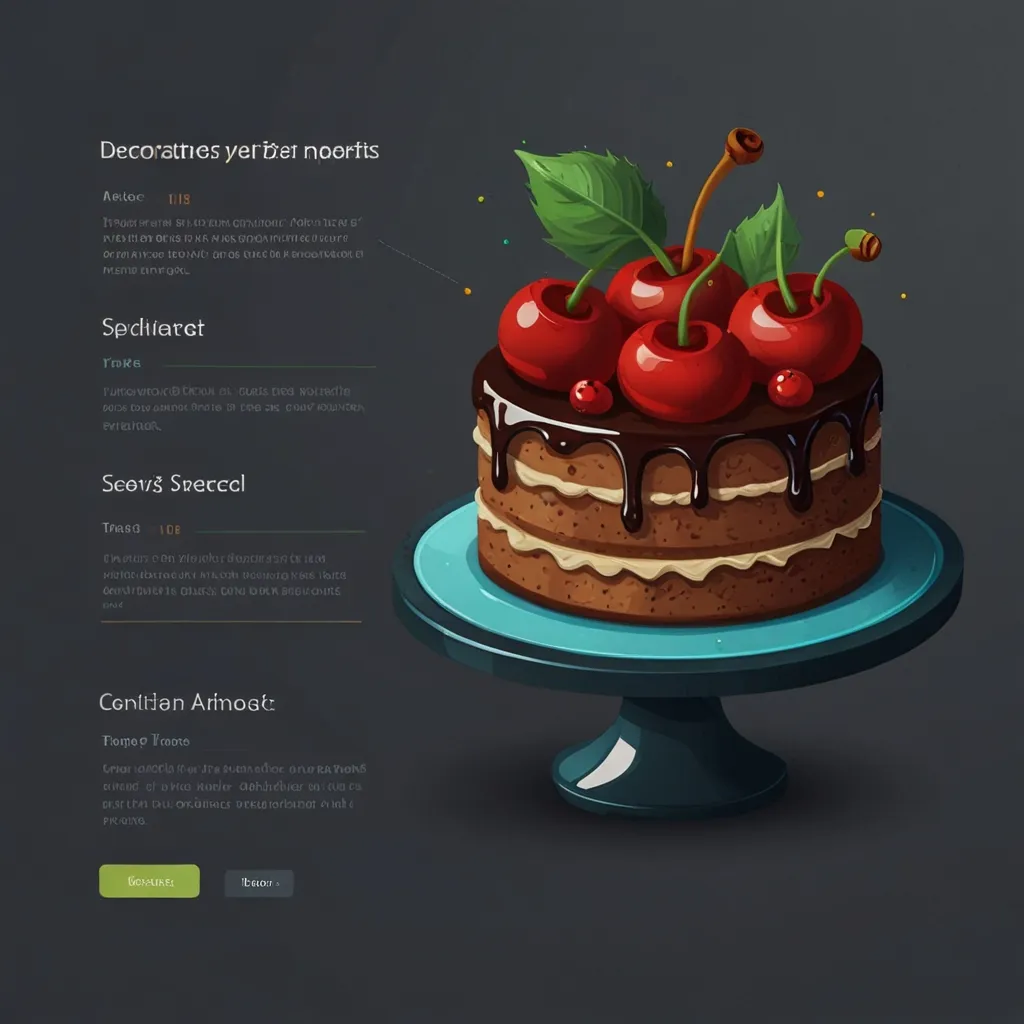Authentication is a crucial aspect of web development, and as developers, we’re always on the lookout for better ways to secure our applications. While JWT and OAuth have been the go-to solutions for a while, there’s a whole world of advanced authentication patterns out there waiting to be explored.
Let’s dive into some cutting-edge techniques that can take your Node.js authentication game to the next level. These methods go beyond the basics, offering enhanced security and flexibility for your apps.
One interesting approach is the use of passwordless authentication. Imagine never having to remember another password again! This method typically involves sending a one-time link or code to the user’s email or phone. It’s not only more convenient for users but also eliminates the risks associated with weak or reused passwords.
Here’s a simple example of how you might implement passwordless authentication in Node.js:
const crypto = require('crypto');
const sendEmail = require('./sendEmail'); // Assume this function exists
function generateToken() {
return crypto.randomBytes(32).toString('hex');
}
function sendAuthenticationLink(email) {
const token = generateToken();
// Store token in database with expiration
const link = `https://yourapp.com/auth?token=${token}`;
sendEmail(email, 'Your login link', `Click here to log in: ${link}`);
}
// In your route handler
app.post('/login', (req, res) => {
const { email } = req.body;
sendAuthenticationLink(email);
res.send('Check your email for login link');
});
Another advanced pattern gaining traction is multi-factor authentication (MFA). It adds an extra layer of security by requiring users to provide two or more verification factors. This could be something they know (password), something they have (phone), or something they are (biometrics).
Implementing MFA doesn’t have to be complicated. Here’s a basic example using time-based one-time passwords (TOTP):
const speakeasy = require('speakeasy');
// Generate a secret key for the user
const secret = speakeasy.generateSecret();
// Verify a token
function verifyToken(token, secret) {
return speakeasy.totp.verify({
secret: secret.base32,
encoding: 'base32',
token: token
});
}
app.post('/verify', (req, res) => {
const { token } = req.body;
const isValid = verifyToken(token, userSecret); // userSecret would be stored for each user
if (isValid) {
res.send('Authentication successful');
} else {
res.status(401).send('Invalid token');
}
});
Biometric authentication is another exciting frontier. While it’s more commonly associated with mobile apps, web applications can leverage it too through the Web Authentication API (WebAuthn). This allows users to authenticate using fingerprints, facial recognition, or hardware security keys.
Implementing WebAuthn in Node.js requires a bit more setup, but the enhanced security is worth it. Here’s a snippet to give you an idea:
const { Fido2Lib } = require('fido2-lib');
const f2l = new Fido2Lib({
timeout: 60000,
rpId: "example.com",
rpName: "Example Corporation",
challengeSize: 128,
attestation: "none",
cryptoParams: [-7, -257],
authenticatorAttachment: "platform",
authenticatorRequireResidentKey: false,
authenticatorUserVerification: "required"
});
app.post('/register', async (req, res) => {
const username = req.body.username;
const challengeResponse = await f2l.attestationOptions();
// Store challenge for later verification
// Send challenge to client
res.json(challengeResponse);
});
app.post('/register/complete', async (req, res) => {
const { attestationResponse } = req.body;
const expectedChallenge = '...'; // Retrieve stored challenge
const result = await f2l.attestationResult(attestationResponse, expectedChallenge);
// Store the public key for future authentications
res.send('Registration successful');
});
Single Sign-On (SSO) is another advanced pattern worth considering, especially for enterprise applications. It allows users to access multiple applications with a single set of credentials. While OAuth2 is commonly used for SSO, there are other protocols like SAML that offer more features for enterprise scenarios.
Here’s a basic example of how you might implement SSO using the SAML protocol in Node.js:
const saml = require('samlify');
const fs = require('fs');
const sp = saml.ServiceProvider({
entityID: 'https://sp.example.com/metadata.xml',
assertionConsumerService: [{
Binding: 'urn:oasis:names:tc:SAML:2.0:bindings:HTTP-POST',
Location: 'https://sp.example.com/acs'
}],
privateKey: fs.readFileSync('path/to/private/key.pem'),
privateKeyPass: 'your_private_key_password'
});
const idp = saml.IdentityProvider({
entityID: 'https://idp.example.com/metadata.xml',
singleSignOnService: [{
Binding: 'urn:oasis:names:tc:SAML:2.0:bindings:HTTP-Redirect',
Location: 'https://idp.example.com/sso'
}],
signingCert: fs.readFileSync('path/to/signing/cert.pem')
});
app.get('/login', (req, res) => {
const { id, context } = sp.createLoginRequest(idp, 'redirect');
return res.redirect(context);
});
app.post('/acs', (req, res) => {
const { extract } = sp.parseLoginResponse(idp, 'post', req);
// Handle successful login
});
These advanced authentication patterns offer improved security and user experience, but they also come with their own challenges. It’s crucial to consider factors like implementation complexity, user adoption, and compatibility with your existing systems before diving in.
I remember when I first started exploring these advanced patterns. It felt like opening Pandora’s box - there were so many options, each with its own pros and cons. But as I experimented with different techniques, I realized that the key is to choose the right tool for the job. Sometimes, a simple JWT is all you need. Other times, a more advanced solution like WebAuthn can provide that extra level of security your application requires.
One pattern that I’ve found particularly useful is combining different authentication methods. For example, you could use passwordless authentication for initial login, and then require MFA for sensitive operations. This approach provides a good balance between security and user convenience.
Here’s a conceptual example of how you might combine passwordless and MFA:
function sendMagicLink(email) {
// Implementation details...
}
function verifyMagicLink(token) {
// Implementation details...
}
function generateTOTP() {
// Implementation details...
}
function verifyTOTP(token) {
// Implementation details...
}
app.post('/login', (req, res) => {
const { email } = req.body;
sendMagicLink(email);
res.send('Check your email for login link');
});
app.get('/auth', (req, res) => {
const { token } = req.query;
if (verifyMagicLink(token)) {
// Magic link is valid, now require TOTP
const totpSecret = generateTOTP();
// Store totpSecret for the user
res.send('Enter the code from your authenticator app');
} else {
res.status(401).send('Invalid or expired link');
}
});
app.post('/verify-totp', (req, res) => {
const { token } = req.body;
if (verifyTOTP(token)) {
// TOTP is valid, user is fully authenticated
res.send('Authentication successful');
} else {
res.status(401).send('Invalid TOTP');
}
});
As we wrap up our exploration of advanced authentication patterns, it’s worth noting that the field is constantly evolving. New threats emerge, and with them, new security measures. Staying updated with the latest developments is crucial for any developer working on authentication systems.
Remember, the goal isn’t just to implement the most advanced or complex system. It’s about finding the right balance between security, user experience, and the specific needs of your application. Sometimes, a well-implemented JWT system might be more appropriate than a cutting-edge biometric solution.
In my experience, the best approach is to start with a solid foundation - perhaps a well-implemented JWT or OAuth system - and then gradually introduce more advanced features as your application’s needs grow. This allows you to maintain a good user experience while continuously improving your security posture.
Whichever path you choose, always prioritize the security of your users’ data. Regular security audits, keeping your dependencies up-to-date, and following best practices in secure coding are just as important as the authentication method you choose.
So, fellow developers, I encourage you to dive into these advanced authentication patterns. Experiment with them in your projects. You might be surprised at how much they can enhance your applications. And who knows? You might even come up with the next big innovation in authentication. Happy coding!






